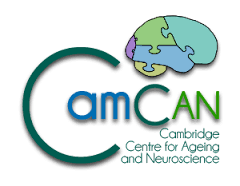CBSU bibliography search
To request a reprint of a CBSU publication, please
click here to send us an email (reprints may not be available for all publications)
To be or not to be…Vegetative.
Authors:
Boly, M., OWEN, A. M. & Laureys, S.
Reference:
In Yearbook of Intensive Care and Emergency Medicine, 918-925
Year of publication:
2007
CBU number:
6403
Abstract:
The vegetative state (VS) is a clinical diagnosis first defined by Jennet and Plum in 1972 (1). It is a diagnosis based on the absence of clinical signs of awareness of self or environment despite preserved arousal. That is, if a patient repeatedly fails to answer to commands and if all behaviors observed are considered reflexive, the patient is considered to be unconscious.Patients in minimally conscious state (MCS, (2)) will show more than the mere reflex behaviour observed in VS survivors, but they are unable to effectively communicate. However, these distinctions are complicated by the fact that there is no universally-accepted definition of consciousness (3). Existing definitions often invoke the importance of “purposeful” or “meaningful” behaviour, but it is not clear what type of evidence is sufficient to demonstrate that a specific motor action is imbued with purpose or meaning (4). Until an objective index is found, the boundary separating consciousness and unconsciousness remains arbitrary (5). Recently, diagnostic schemes built around the presence or absence of criterion behaviours have been developed to distinguish MCS from VS (2, 6, 7) . While behaviourally-based diagnostic criteria are useful for characterizing patients clinically, they are inherently flawed because motor responsiveness is often an unreliable proxy for consciousness. Movements that appear to be volitional may actually be reflexive in nature and vice versa. Complicating matters further, patients may exhibit behavioural signs of awareness during one examination and fail to do so on the next. Fluctuations in arousal and motor responsiveness commonly occur in disorders of consciousness (DOC) and may result in diagnostic instability (8, 9). These factors have conspired to produce high rates of misdiagnosis in VS, especially if the diagnosis is not made by trained physicians with the necessary expertise: previous studies have reported diagnostic error in 18% (10), 37% (11) and 43% (12) of patients considered “vegetative”.

 MRC Cognition and Brain Sciences Unit
MRC Cognition and Brain Sciences Unit

